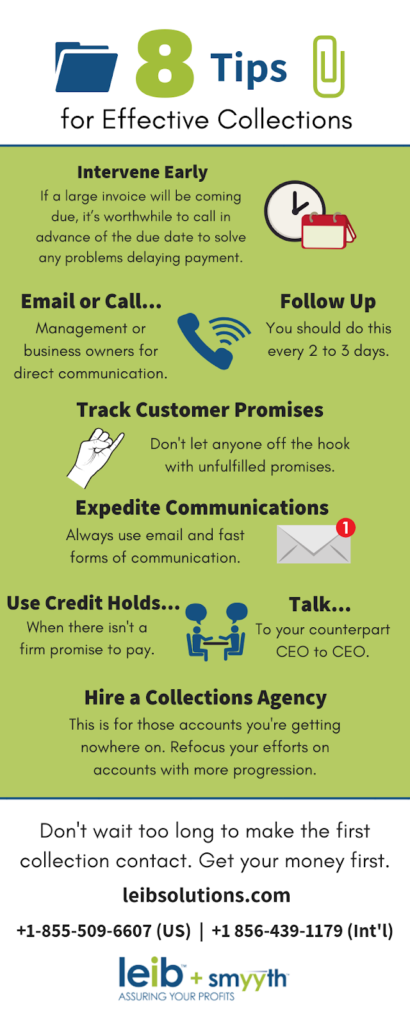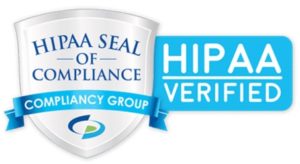Accounts receivable commercial collections at many companies are still in the green eyeshade era with out-of-date processes, leaving many opportunities to improve results. However, like many repetitive processes, collections is a production operation and can be engineered to improve cash flow, reduce DSO, and slash the disputes that result from letting unpaid accounts go stale.
This is a zero-sum game. If you do not aggressively work to collect your receivables, the customer will pay other vendors who were more assertive in their collection follow-up. Your customers learn from your practices. Unfortunately, many creditors wait until the customer is seriously past due before making the first collection contact.
At Leib Solutions, considered one of the best commercial collection agencies, we know cash flow is the lifeblood of every business, and success or failure depends mainly on how well accounts receivable is managed. Collecting receivables more quickly enables companies to reduce bank borrowing, invest more in growth, and improve profits. Our experience is that delinquent A/R can be dramatically reduced, even cut in half. Here are some basic ideas to implement in your organization:
- Credit and Collection Policy. Every company needs a credit and collection policy that gives the department the appropriate framework to work. This policy (and procedures) should be by management – detailing the criteria, parameters and tools used (restricting credit, collection agencies, lawyers, etc.). Even a one-page credit and collection policy may be enough for a small company. Larger companies need to go into much more detail.
- Advise the Customer of Your Policies. The customer should receive a written explanation of your credit and collection policies- how you expect them to behave. Ideally, make it part of your Credit Application, but always email it afterward, so they understand the business rules.
- Credit Application. Use a credit application which includes your policies and purchase terms, and use e-signatures to have an official, signed record. The buyer invariably has their terms on the back of their purchase order, which will not be favorable to the seller, so it is common sense to establish your business rules upfront and get it signed.
- Contact Data. Your customer contact data should always include the telephone and email addresses of your payables contact, controller, and customer management. You should also have the owner’s cell phone number if the customer is small. All of this information should be on your customer credit application.
- E-signatures. If you need documents signed, such as settlements and promises to pay, use e-signatures and forget faxes. Digital signing is effortless and is legally binding. It simplifies getting any agreements signed.
- Correct Your Customers’ Habits. Large customers use software to optimize their accounts payable: they track how soon and persistently you follow up and pay you accordingly. Small companies follow the same practice without the software, often waiting until you call. They pay you based on how you train them to pay you through your everyday collection practices.
- Set Up Standard Procedures and Train Staff. Do not leave it up to collectors to make up their own policies and rules about how soon or frequently the customer should be contacted. Most people do not like to ask for money; without rules, they may not call with the consistency required for effective collection results.
- Letter Templates and Call Scripts. How much do you want your staff to exercise their inner artist? Do not leave it up to staffers to make it up as they go along or to develop personal collection strategies. Establish the rules, and provide standard collection letter or email templates and scripts for telephone and voice mail. Email vs. letters? There is no contest, as email is immediate and less work, but just as with form letters, you need to use pre-formatted collection emails.
- Prioritize Your Work. Even with experienced collection staff, you need to prioritize collection activity so your staff works the receivables that offer the most significant cash flow payback. If you have an advanced system, you can also employ risk or payment scoring to assign the accounts needing first attention. You may also consider outsourcing all or part of the function to a qualified agency, which usually produces more focused, better results and usually at less expense than full-time staff.
- Assign Goals and Track Results by Department and Collector. Collections is “production” work, and you need to develop clear goals for monthly cash and delinquency targets and the number of daily calls and contacts (since you need to have all customers touched).
- Reporting. Daily reporting should include calls made, promises obtained, disputes resolved, etc. Monthly reporting should roll up the daily results, plus report the financial results – Cash Collected, DSO, Delinquencies, etc. Of course, the department goals must match up against the corporate objectives of your CFO.
- Make Paying Easy. Offer multiple ways to pay, including ACH and credit card, with your smaller customers. Intuit QuickBooks, among many, has a very effective and free ACH offering for e-billing and a payment module that integrates with QuickBooks.
- Systems and Workflow. If you have sizable receivables outstanding or many customers, or if you still use spreadsheets, you must acquire an A/R workflow system to manage collections and automate routine tasks. See Carixa for an idea of what a comprehensive, integrated “Software as a Service (SaaS)” system can do for you. Deploying this powerful collection software guarantees faster collections, lower DSO, and fewer delinquencies. As with all SaaS offerings, it is internet browser-based, so there is no software to install or hardware to purchase.
- FDCPA Regulations. The Fair Debt Collections Practices Act doesn’t apply to B2B transactions, but always keep in mind that you must comply with the FDCPA if you are dealing with consumers. Regardless, all customers should always be handled professionally and consistently, which reflects your corporate culture, even the few abusive customers.
- Collection Activity Cycle. Don’t wait as long as your competitors to make the first collection contact; use email to your advantage. Get the money first. Here’s an infographic with eight tips on what you should do to maximize your returns in the collection activity cycle:
Outside Help: Collection Agencies and Outsource Services
Professional receivables organizations such as Leib Solutions or Smyyth.com offers both First-party and Third-party collection services. First-party is another name for customer service-oriented outsourcing of non-seriously delinquent receivables under the client’s name. Generally, first-party services are performed for a low account service fee or a low percentage fee.
Third-party collections are the traditional “collection agency” services when accounts are old and uncooperative, with fees commensurate with the age of the receivable.
Some creditors wait until there is little hope of collection, telephones disconnected, or bankruptcy before calling a qualified collection agency. This delay is evidence of failed collection management. Often the company is concerned about collection fees, but the old saw “better to get 70% of something than 100% of nothing” applies here. It’s just common sense.
The first step in improving your company’s cash flow is to take the first step. Lay out a plan of attack, or, if you want some advice, contact us. We will be happy to help in any way we can.



